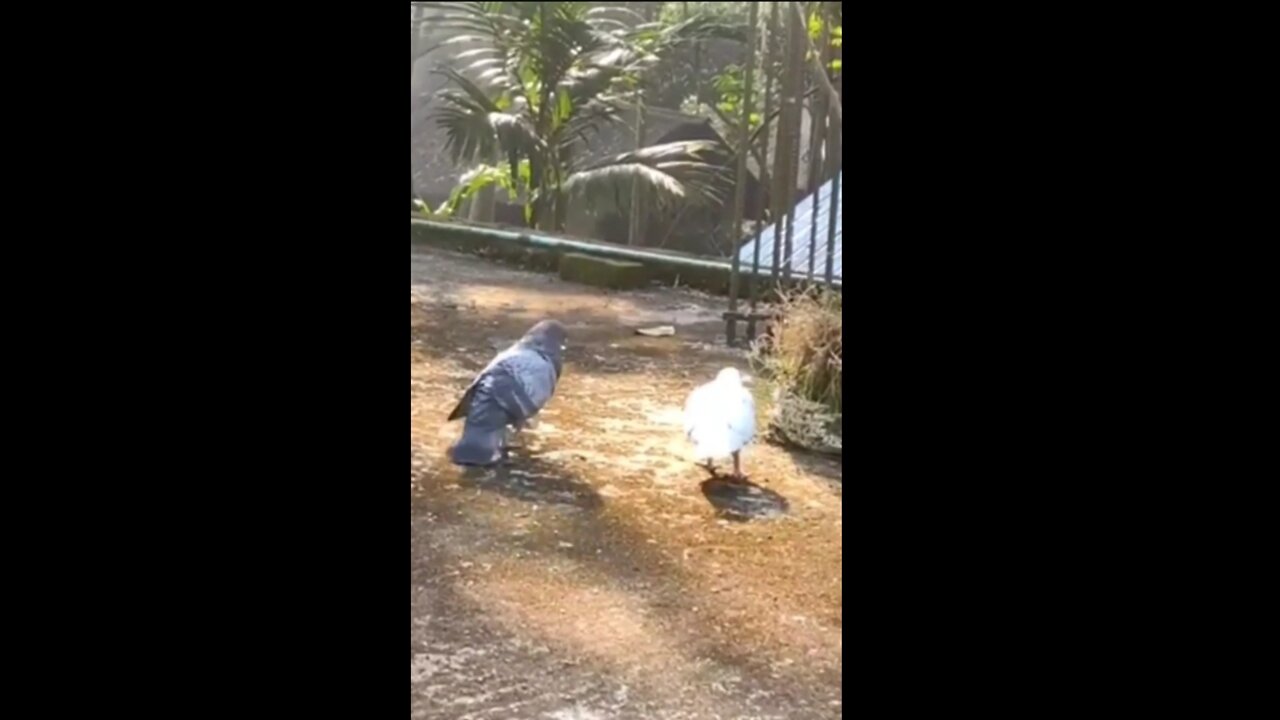Premium Only Content

All Pigeon is very nice.
Columbidae (/kəˈlʌmbɪdiː/) is a bird family consisting of pigeons and doves. It is the only family in the order Columbiformes. These are stout-bodied birds with short necks and short slender bills that in some species feature fleshy ceres. They primarily feed on seeds, fruits, and plants. The family occurs worldwide, but the greatest variety is in the Indomalayan and Australasian realms.
Columbidae
Temporal range: Early Miocene–recent[1]
PreꞒꞒOSDCPTJKPgN
Treron vernans male - Kent Ridge Park.jpg
Pink-necked green pigeon
Scientific classificatione
Kingdom:
Animalia
Phylum:
Chordata
Class:
Aves
Clade:
Columbimorphae
Order:
Columbiformes
Latham, 1790
Family:
Columbidae
Leach, 1820
Subfamilies
See text
Pigeon range.png
Geographic range of the family Columbidae
The family contains 344 species divided into 50 genera. Thirteen of the species are extinct.[2]
In English, the smaller species tend to be called "doves" and the larger ones "pigeons".[3] However, the distinction is not consistent,[3] and does not exist in most other languages. Historically, the common names for these birds involve a great deal of variation between the terms. The bird most commonly referred to as just "pigeon" is the domestic pigeon, which is common in many cities as the feral pigeon.
Doves and pigeons build relatively flimsy nests, often using sticks and other debris, which may be placed on branches of trees, on ledges, or on the ground, depending on species. They lay one or (usually) two white eggs at a time, and both parents care for the young, which leave the nest after 25–32 days. Unfledged baby doves and pigeons are called squabs and are generally able to fly by 5 weeks of age. These fledglings, with their immature squeaking voices, are called squeakers once they are weaned or weaning.[4] Unlike most birds, both sexes of doves and pigeons produce "crop milk" to feed to their young, secreted by a sloughing of fluid-filled cells from the lining of the crop.
-
 LIVE
LIVE
The Charlie Kirk Show
1 hour agoTrump's Tariff Brilliance + Crushing Lawfare Forever | Sen. Moreno, Habba, O'Keefe | 11.26.24
11,438 watching -
 LIVE
LIVE
TheAlecLaceShow
1 hour agoTrump Threatens Tariffs on Mexico & Canada | Jack Smith Drops Charges | WW3 | The Alec Lace Show
586 watching -
 6:57
6:57
Rethinking the Dollar
15 hours agoCommodities Boom Incoming: Why Gold and Silver Are Leading the Charge
5652 -
 LIVE
LIVE
Sgtfinesse
1 hour agoSarge's 1st Stream on Rumble
456 watching -
 58:23
58:23
The Dan Bongino Show
4 hours agoDemocrats Enter Full Panic Mode (Ep. 2378) - 11/26/2024
474K1.13K -
 58:04
58:04
The Rubin Report
2 hours agoCNN Host Gets Visibly Angry as Her Trap for Conservative Backfires in Her Face
25.6K45 -
 1:28:35
1:28:35
Benny Johnson
2 hours ago🚨VICTORY: All Charges Against Trump DROPPED, Time For REVENGE | Mexico, Canada Bend Knee To Trump
35.1K40 -
 2:17:41
2:17:41
Steven Crowder
4 hours agoTired of Winning Yet? Jack Smith Drops Trump Charges and Mexico Bends The Knee!
293K183 -
 2:00:50
2:00:50
LFA TV
15 hours agoNATIONAL SECURITY THREAT! | LIVE FROM AMERICA 11.26.24 11am EST
23.5K17 -
 1:19:04
1:19:04
Graham Allen
5 hours agoPANIC‼️ Biden Is Giving NUKES To Ukraine! + Jack Smith DISMISSED Cases Against Trump!
101K73